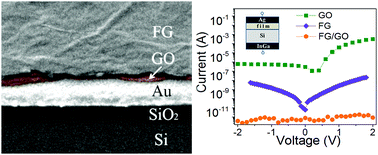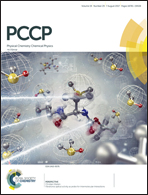Two-layer and composite films based on oxidized and fluorinated graphene
Abstract
This study is devoted to the production and investigation of dielectric films, based on oxidized and fluorinated graphene suspensions. The properties of the graphene oxide films may be greatly improved by adding fluorographene. FG films have transmission in the visible and near infrared ranges equal to 96–98%. Two-layer films of fluorinated graphene on graphene oxide and composite films (composite suspension of fluorinated and oxidized graphene) exhibit good insulating properties. Their leakage currents are lower than that in the graphene oxide or fluorinated graphene by 3–5 orders of magnitude. A significant increase in thermal stability and relatively low charge in the film and at the interface with silicon (3 × 1010–1.4 × 1011 cm−2) are also found for these films. An application of thin fluorographene films (a few nanometers) decorates and eliminates structural defects in the graphene oxide films, resulting in conductivity blocking in graphene oxide. The built-in charge density in the composite film of 10–20% fluorographene in the graphene oxide is much less than in the two-layer film (<1 × 1010 cm−2). The created two-layer and composite films may be practically applied in 2D printed and flexible electronics as insulating films (gate dielectric and interlayer insulator), as well as materials showing the resistive effect.



 Please wait while we load your content...
Please wait while we load your content...